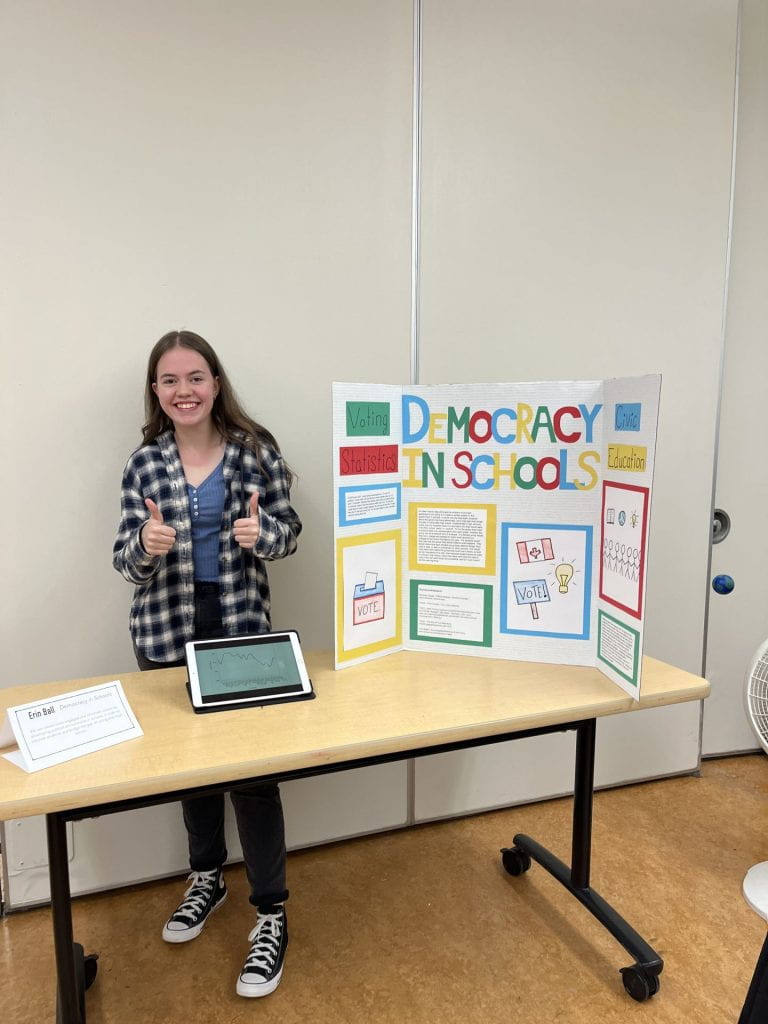Hi, my name is Erin. Welcome to my blog. Im a grade 11 high school student in Canada. I just finished a PLP Spring Exhibition! How might we transform education systems to create engaged and informed citizens? Keep reading to learn my answer to this driving question!
Spring exhibition!
Every year in PLP we do two exhibitions. One winter exhibition in December, and one spring exhibition in June. These exhibitions are for us students to present and show our work and learning. This spring exhibition we showed our projects about the school education system and democracy. We did a unit learning about civics and civic education, discussed a lot about student engagement, and talked about what we would want to change in the education system. A topic that i found interesting was civic education and the voting gap after high school. So I decided to do a project on an idea I had to fix the two problems.

Civic education
Democracy doesn’t work unless we vote. The reasons for why people don’t vote are unclear. There are many different reasons, however one main reason may simply be we don’t learn about it enough in schools. School, specifically high school, is supposed to prepare us for the real world. We don’t learn a lot about the government, democracy, voting, or stuff like that. Elections Canada Website says “The goal of the civic education program is to give young people the knowledge, understanding, interest and skills they need to decide how they want participate in democracy.” This is the goal of civic education however it is barely taught in school. I can only remember doing 1 previous unit specifically on civic education and democracy in high school. Civic education is important.
Voting statistics
In 2019 and 2021, voter turnout decreased by 1.3 and 4.4 percent. Youth voter turnout fell at an even greater rate, by 3.2 and 7.2 percent. Studies have shown that voting is habit forming. If a person votes in the first election after they turn 18, they are more likely to vote in every election for the rest of their life. Those who don’t vote once they turn 18, are less likely to vote in another election during their life.
Democracy in school education
An idea I had to help eliminate the problem of younger generations not voting is to create a similar system to the government in schools. It would not only help teach students about the government and democracy, but it may also help bridge the gap of voting after high school. Implemented in high schools, every year the students would run and elect who they would want to be their school “party” or “council”. To run the group does need to have at least one representative from each grade, however the group can be anywhere from 5-9 people. The elected group would then be in charge and allowed to make small decisions or changes to the school throughout the year. The students would than see how the group they elected affects what happens. They would notice how each elected group does different things, from year to year, or also in comparison to other schools. This would help teach them about the government and how it works, as well as the importance of a vote. Also because student would be used to voting in high school, when they leave and have the right to vote in the real world they’ll be somewhat used to it and it won’t be this new big thing.
We can create more engaged and informed citizens by developing political environments in schools, in order to educate students and bridge the gap of voting after high school.
Leave a Reply